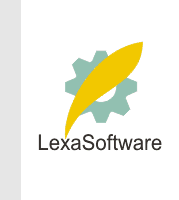Filmscanners mailing list archive (filmscanners@halftone.co.uk)
[Date Prev][Date Next][Thread Prev][Thread Next][Date Index][Thread Index]
Re: filmscanners: Burning CD's
There seem to be two camps on this matter.
I come from the rewritable camp, simply because there is no way to
recycle those darn CD-R disks.
You should know that the two methods of storage are very different in
their mechanisms. The CD-R disk uses a laser to permanently change a
dye layer making it either dark or clear. This dye is light sensitive
(obviously, since lasers are a type of light source). There are dozens
of different mixes of dye materials, and experimentation is still going
on in how to make these more permanent. You will hear that certain dyes
and reflective background materials are better than others. Some dyes
have faded in as little as 3 months under some conditions. All of the
dyes are vulnerable to bright lighting, so you should never store them
outside of their cases, or leave them where heat or sunlight falls on
them. Some dyes fail from repeated reading by laser.
Some dyes are claimed to last up to 100 years. CD-R disks are more
likely to be readable by most modern CD-ROM players, and also most audio
CD and DVD players. Also, CD-R disks are not speed determined, meaning
they can be written to any speed that you CD writer can write at.
However, some disks will have errors when they are written too fast for
the quality, and nit is best not to exceed the manufacturer's
recommendations for those particular disks.
Now, CD-RW, or rewritable disks, use a different method to record the
data. They use a concept called "phase change". This method uses the
laser to heat a layer of metalized material which can be either made
into an opaque non-refective crystal, or a transparent non-crystaline
form. These are less vulnerable to light, but might be more so to heat.
CD-RW disks are rated for their speed. You cannot write them faster
than the rating the manufacture gives them, although they can be written
more slowly. There are disks which are rated 1x, 2x, 4x, 6X, 8x and
10X. The 4X can be written at 2X and 1X. All the rewritable disks
which are rated 6X or more cannot be written below 4X, as they use a
special formatting and materials which do not work properly if recorded
slower than 4X.
The phase change process is repeatable many times, although the
suggestion of 1000 times, is based upon not all points on the disk being
re-written each time. It is probably safe to write 100 times, however.
The original phase change disks, which have laser etched markers on the
disk were called PD and came in a cartridge. They originally cost about
$100 each, but they were rewritable up to .5 million times.
Like all writable materials, brand name CD-RWs should be used for best
reliability.
As I see it, the main considerations in terms of which media to use, are:
Speed: Usually, CD-Rs can be written to more quickly (up to 16X-20X)
versus CD-RW which currently tops out at 10X-12X
Cost: CD-RW disks cost more initially, but quickly pay for themselves if
you rewrite them
Permanence: Jury is still out is one is better than the other. PD
disks, which have been around for 10 years or more claim at least a 30
year shelf life.
Utility: Both CD-R and CD-RW can be formatted to be used with "Direct
CD" software, which allows them to be written to like a hard drive,
little by little. Obviously, the CD-R disks can only be filled once,
and then that's it.
The CD-RWs can be erased and reused. However, Direct CD cannot be read
by many CD-ROM drives, and the formatting takes a long time per disk.
The formatting is complex and is probably more likely to fail, and there
are stories of people having disks become unreadable after one
particular write session. I would not recommend it for archiving.
With both CD-R and CD-RW you can write multi-session, but besides losing
some of the space due to the formatting necessary, you also take a
higher risk of failure or non-readability in the future.
Under normal formatting, CD-RW disks cannot be written to and
erased in segments; to erase, you have to wipe the full disk clean.
There are two methods of erasing, one takes longer and is more thorough.
CD-RW are less likely to be universally readable. If you need this
(for printing, clients, etc,) CD-RWs are probably not a good idea.
However,if you are working internally, and your drives read them, it is
not an issue.
Conclusion (mine at least): When I have finalized a project, I
sometimes write to CD-R, and sometimes to CD-RW. If it is for someone
else, I write to CD-R, because it is more compatible and cheaper, since
they probably won't be returning the disk.
Anything in transition I write to CD-RW. I almost always write a full
disk at a time, using my hard drive to store materials until I get
around 650 megs of info together. However, my graphics are large and it
doesn't take long to fill up a 650 meg disk.
Art
Photoburt@aol.com wrote:
> I'm just getting started in CD burning. I saw that my options in
blank CD
> are between Rewritable and Write Once Only. Is there any preference
> between
> the two for photographic image storage? My inclination is to think
that
> Rewritable would be preferable because of the possible need to
> adjustments in
> the image.
>
> Thanks in advance for your input.
>
> Burt
|

